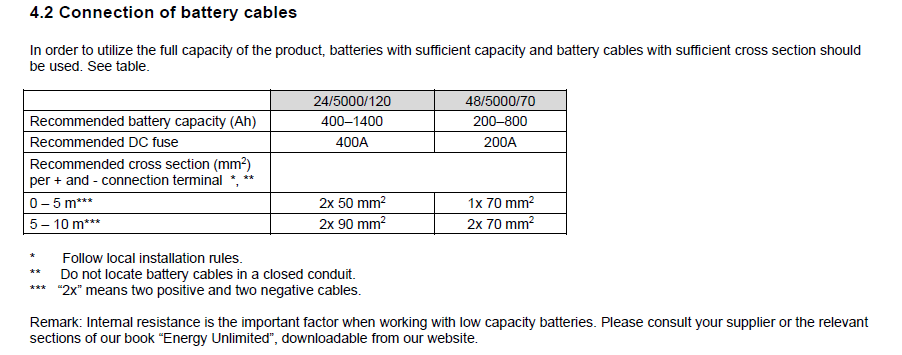Hello [Victron Staff] and @Alexandra ,
I recently installed a backup system consisting of a Multiplus 48-5000/70-100 with 12 Gel batteries of 200Ah each, for a total capacity of 600Ah-48V, the multiplus automatically starts a 13KVA generator when the load exceeds 3500W, and the customer wants to reduce its fuel consumption by increasing the power of the inverter.
The problem is that I noticed that the customer's load very often goes from 2600 to 7000W when he turns on the microwave, as well as all his air conditioners, even if it lasts only a few minutes, and this produces a strong drop voltage in the batteries (High DC ripple)leading to the starting of the genset.
The section of the cables between the inverter and the batteries had been well respected during the installation, this means that the voltage drop cannot be caused by an insufficient cable cross-section and leads me to believe that the batteries are small compared to the load.
What formula can I use to calculate the current drawn from the batteries when the load is high(7500W), and thus determine the optimal capacity of the batteries?
I thank you in advance for your quick reply.

